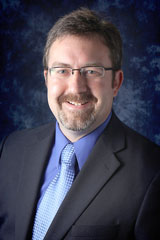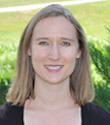Jul 13, 2016
An Interview with David Schmitz
by Allee Mead
 David
Schmitz has an impressive résumé. The Idaho physician and
medical educator serves as the Chief Rural Officer and
Program Director of RTTs at the Family Medicine Residency
of Idaho. In addition, he is the co-creator of the
Community Apgar Program (CAP), an assessment tool that
allows rural health facilities to test their ability to
recruit talent to the area, and he was voted the 2016
National Rural Health Association (NRHA) president-elect
and 2014 Volunteer of the Year, among other professional
and volunteer endeavors. Here, he shares his thoughts on
the strengths of rural communities, the challenges they
face, and his pride in being a "country
doctor."
David
Schmitz has an impressive résumé. The Idaho physician and
medical educator serves as the Chief Rural Officer and
Program Director of RTTs at the Family Medicine Residency
of Idaho. In addition, he is the co-creator of the
Community Apgar Program (CAP), an assessment tool that
allows rural health facilities to test their ability to
recruit talent to the area, and he was voted the 2016
National Rural Health Association (NRHA) president-elect
and 2014 Volunteer of the Year, among other professional
and volunteer endeavors. Here, he shares his thoughts on
the strengths of rural communities, the challenges they
face, and his pride in being a "country
doctor."
You have been actively helping communities improve their recruitment and retention prospects for many years through the Community Apgar Program (CAP). What common challenges have you seen in communities across the nation in terms of recruiting providers?
Each rural community is unique, as is each physician and family. Perhaps my co-Principal Investigator, Dr. Ed Baker, and I have learned more about the fit between people (physicians are people, too) and their communities than anything else with our team's hundreds of interviews across the rural United States (and Southern Australia).
That being said, many rural communities face common challenges in recruiting and retaining physicians, some of which also pertain directly to patient care. For example, in the 9 states that have participated in the Community Apgar Program, many have consistently identified mental healthcare for patients as not only an important concern in caring for the community, but also one of the most significant factors related to physician satisfaction (recruitment) to a rural community in that state.
In other areas of our work, we have found spousal satisfaction to be a consistent factor, which is among the most important and can be a key challenge in some situations. Satisfaction with schools for children is an example of a factor that does differ between states and communities, from being a challenge in some to actually being a distinguished advantage in others. Additional factors such as the opportunity for a physician to satisfy the community needs and "make a difference," eligibility for medical school loan repayment, and scope of practice are each examples of common rural community assets across the states studied.
What lessons have you learned about why physicians leave a community? What are key factors that make them stay?
Again, the uniqueness of these reasons, perhaps better described as personal stories, are a myriad of lessons ranging from returning to a teaching institution to simply retiring from practice; some commonalities are shared. I will say, however, that the dynamic of the practice and the medical partnership of the team providing care to patients does seem to be paramount in the resiliency of the medical staff to weather the inevitable challenges (or sometimes constant changes) in rural medical care.
Some physicians are so dedicated that we continue to work to study the characteristics, aptitudes, and support allowing them to make these particularly special contributions to communities for decades of a career. As a rural medical educator, I want to foster these qualities for communities and generations to come.
Also, some physicians are so dedicated that we continue to work to study the characteristics, aptitudes, and support allowing them to make these particularly special contributions to communities for decades of a career. As a rural medical educator, I want to foster these qualities for communities and generations to come.
What do you see as the future of the Community Apgar Program?
The Community Apgar Program has continued to grow, evolve, and bring on new partners since its inception. Our first project with the State Office of Rural Health in Idaho was based on communities with Critical Access Hospitals (CAH). This original project has now been deployed for nearly a decade and in 8 states. We developed our second tool for physician recruitment to rural Community Health Centers and have teamed with our nursing colleagues to implement a recruitment tool for nurses to CAHs as well. Next, we would like to continue to expand to other providers and additionally consider the recruitment of CEOs to rural hospitals, as we know that they are a key linkage to leading the team and to the overall workforce recruitment in rural facilities.
Recently, we have also begun to work internationally, in cooperation with the University of Melbourne, to successfully use the tool in rural Australia. In Iowa we worked creatively with the Iowa Hospital Association and adapted the CAP to online use with tele-presentation. The National Rural Recruitment and Retention Network has become a key partner over the years as they have developed accompanying online resources for the CAP. The National Organization of State Offices of Rural Health and NRHA have always been strong partners, as have Area Health Education Centers and usual members of our "rural family." The programs owe their origin to the Idaho SORH, Idaho Academy of Family Physicians, Boise State University, and the Family Medicine Residency of Idaho.
How do you think medical schools and residency programs can best select and prepare students for rural practice?
This question is the pursuit of our career for many of us in rural medical education. I can recall my days in St. Maries, Idaho, where I would teach medical students and residents in this beautiful and isolated town with a CAH and Rural Health Clinic, a logging town of 2,303 people. I still study the question and am likely to for at least another 20 years. We did publish a recent policy brief jointly updated for the NRHA and AAFP called Graduate Medical Education for Rural Places.
I like to say that 'training in the sticks, sticks' but the evidence is clear that there is something special about rural programs and rural places that make a difference for students to serve in rural practice.
Overall, I would say it's about having the right people in the right places at the right times. I am inspired by partners that I have the opportunity to work with, from the University of Washington WWAMI to the University of North Dakota and from Wisconsin to Colorado. With contributions by large medical schools and community-based residency programs alike, they each are making a big difference. I like to say that "training in the sticks, sticks" but the evidence is clear that there is something special about rural programs and rural places that make a difference for students to serve in rural practice. An upcoming article in Family Medicine entitled "Do Residencies that Aim to Produce Rural Family Physicians Offer Relevant Training?" should bring us a little more clarity on one piece of the puzzle.
What are the biggest challenges facing rural family physicians? Likewise, what are the rewards of rural family practice?
The challenges are temporary and can be temporized, but the rewards for rural family physicians are eternal.
The challenges are temporary and can be temporized, but the rewards for rural family physicians are eternal. Workforce needs have provided physicians with the challenge of recruiting partners, covering call, and stretching their scope of services to meet community needs. However, it is always the team, the community, and the people every day that make the difference of culture and the way in which this is experienced by physician, family, and our rural neighbors.
I could refer you to a research study looking at scope of services and physician satisfaction or how "grit" affects rural physicians, but perhaps readers could follow up and we could have a good chat of how to keep the best folks in medicine answering the call. I will say that technology has changed some things but perhaps not most things, or the most important things. It is still the relationship and the hands-on care that people give, and receive, that makes the most impact. Whether in the delivery room, the emergency room, or during a hospice home visit, the rewards are personal; just ask any of us "country doctors."
If you could change how rural healthcare is delivered, what changes would you make?
I will paraphrase one of my greatest mentors, Dr. Ted Epperly at the Family Medicine Residency of Idaho: Our goal is to deliver comprehensive, quality care as close to home as possible. Population health and the best use of technology is coming but we do see these changes accompanied by the inefficiencies and pain seen in any disruptive innovation.
Our payment systems seem not to be the first but must not be the last to adapt to a system designed for health and outcomes for patients. Alignment of payment with outcomes, in consideration of rural people as populations, but more so as communities, will result in better care. This will likely take each of us and will not occur overnight, but in a rural community may be somewhere closer to an old-fashioned barn raising: a lot of coordinated effort, but knowing the what and why.
What do you see as the biggest opportunities for rural healthcare right now?
One of these opportunities is to demonstrate that the way rural healthcare is delivered, intuitively and by its nature, does reflect many of the desired 'newly discovered' best practices.
One of these opportunities is to demonstrate that the way rural healthcare is delivered, intuitively and by its nature, does reflect many of the desired "newly discovered" best practices. Many of the population-based health objectives, coordination of care, emphasis on primary care and prevention, public health initiatives, and community-integrated resources match goals of the IHI's Triple Aim and are reflected in decades and generations of healthcare in rural communities. Technology and aspects of healthcare may change, but good care does not. People know good care and rural communities know how to deliver on that.
We need to share and explore the evidences of the strengths of rural community healthcare as we cross the "shaky bridge" (thank you Tommy Barnhart, NRHA) to the Future of Rural Health. One distinguished opportunity is certainly education and workforce development in rural, for rural – and this will be one of my points of emphasis as the incoming president of NRHA in 2017.
How did you find your passion for rural healthcare?
We all want meaning in our lives and to use our gifts to serve along our walk together. Rural medicine gave that to me.
That's an easy one: inspiration from others and the chance to find myself in making a difference. We all want meaning in our lives and to use our gifts to serve along our walk together. Rural medicine gave that to me and now as a rural medical educator, I am passing on that example. It's actually pretty tough to give back as much as you receive; that's what drives me.
Is there anything else you'd like to share with us?
I have gained an ongoing appreciation for research, education, care delivery, and advocacy. Communication, however, is the key to each. It really comes down to the relationships, the knowledge that makes them work, and the ability to trust one another in our efforts to make a difference together. Let's do that for rural health in this country and for our neighbors.
Opinions expressed are those of the interviewee and do not necessarily reflect the views of the Rural Health Information Hub.

